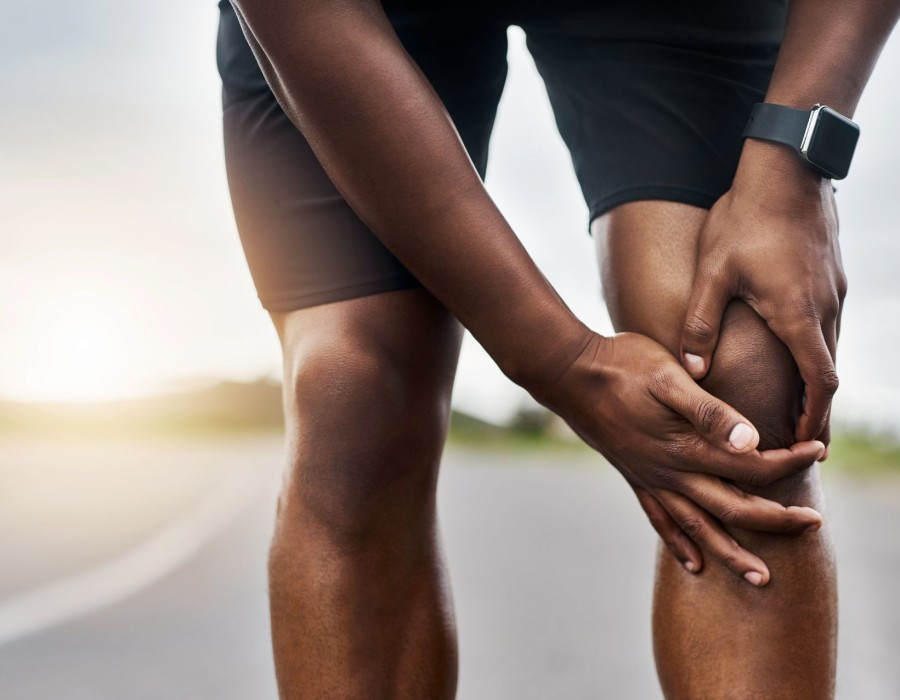Depending on whatever structure of the knee is injured, twisting it might create different sorts of discomfort. While this sort of injury most usually affects ligaments or C-shaped bits of cartilage known as the meniscus, it can also impact muscles, bones, and nerves. In addition to pain, knee weakness, instability, edema, and locking of the knee may occur.
Knee pain on the inner side may be caused by a sprain of the medial collateral ligament (MCL), whereas discomfort on the outer side may be caused by a sprain of the lateral collateral ligament (LCL). Pain in the middle of the knee may be caused by a patellar (kneecap) injury, whereas shooting pains in the knee may be caused by referred pain from elsewhere in the body.
Common causes of knee pain:
- Medial Meniscus Tear
- MCL Sprain
- Knee Pain and Osteoarthritis
- Patellar Dislocation
- Synovial Plica Syndrome
- Lateral Meniscus Tear
- LCL Sprain
Diagnosing Knee Pain
The diagnosis of knee pain begins with an examination of your medical history, including any recent injuries. The physical exam will include palpation (touch examination) and light manipulations to assess your knee's range of motion, the site of knee pain, and any physical deformities.
Based on the initial findings, the following may be ordered:
- X-rays: These are generally good for diagnosing joint inflammation, visible rips, and dislocations.
- Computed tomography (CT): This imaging method, which combines numerous X-rays, may be better at detecting mild knee problems.
- Magnetic resonance imaging (MRI): This imaging approach allows for improved visualization of soft tissues and is frequently employed when a meniscus or ligament rupture is suspected.
- Arthrocentesis: This is the fluid extraction from the knee joint to examine for blood, symptoms of infection, and other abnormalities. It is also known as joint aspiration.
- Arthroscopy: A lighted scope is inserted into a tiny incision in your knee to examine the joint space.
Treatment
The RICE (rest-ice-compression-elevation) treatment can be employed early on after an acute twist injury to assist in managing pain and inflammation:
- Begin by raising your leg above your heart regularly and refraining from any activity that aggravates your symptoms.
- Ice can also be administered to the affected area for 10 to 20 minutes at a period, three or more times each day.
- Finally, a compressive bandage or sleeve may be applied to the knee to help relieve swelling.
Several therapies may be recommended after your knee pain has been appropriately examined by your doctor.
Medications
Tylenol (acetaminophen) or nonsteroidal anti-inflammatory drugs (NSAIDs), like Advil (ibuprofen), can help relieve mild to severe joint pain after a twisting injury.
For more serious injuries, your doctor may recommend a cortisone injection with a knee brace to help stabilize the knee.
Physical Therapy
Physical therapy can also help with the pain and impairment caused by a variety of disorders, such as ligament sprains, meniscal tears, hip osteoarthritis, SPS, and sciatic knee pain.
Exercises that focus on improving the knee and hip muscles and improving balance are frequently utilized to offer support and stability to the damaged area. Gentle stretching exercises may also be required to increase your leg's range of motion.
Surgery
Following a more serious injury or one that cannot be adequately addressed utilizing the treatments listed above, surgical intervention may be required. In the event of a meniscal tear, this usually entails mending or removing the injured cartilage.
For significant ligament rips or recurring patellar dislocations, an arthroscopic graft may be required to add support to the damaged area. Finally, in severe cases of osteoarthritis, a total knee replacement may be necessary to remove and replace the diseased joint.






Comments